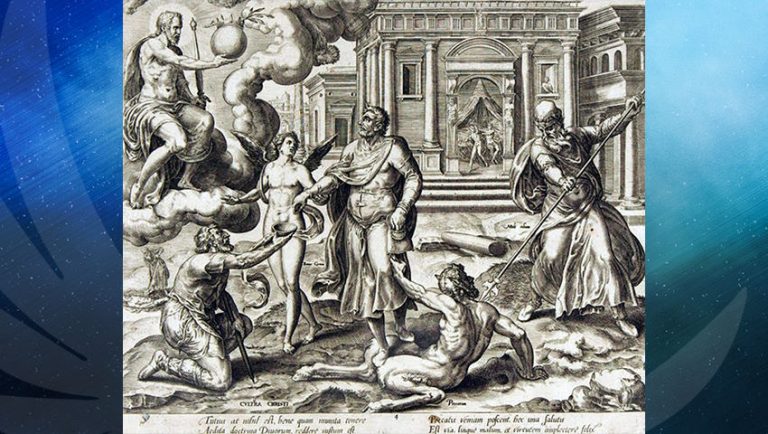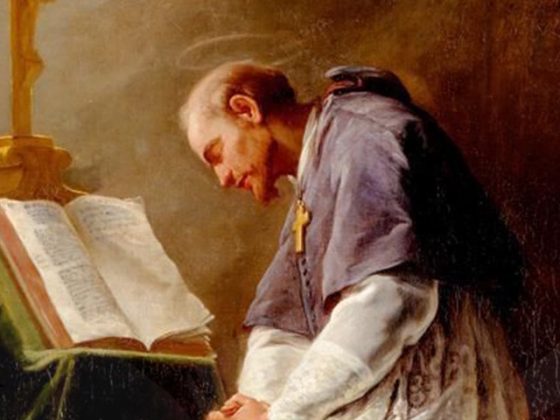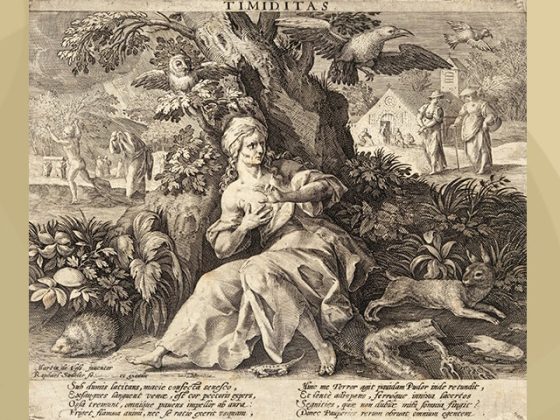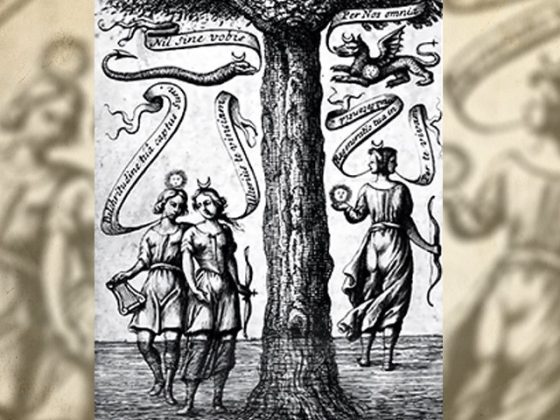Dearly beloved readers:
I am sending you, on this occasion, the fourth and last engraving of the series entitled The four ways of living on Earth.
Today I present to you what was called in its time…
…CULTURA CHRISTI
─'The Way of the Christ'─
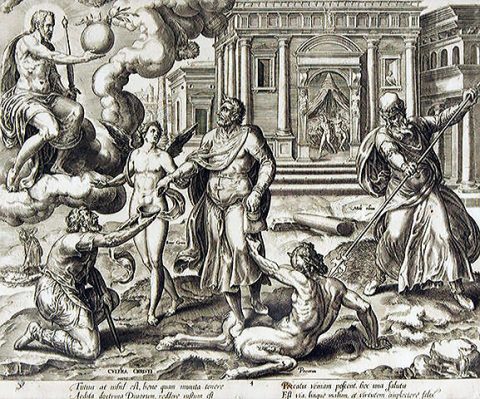
This beautiful engraving shows us first of all the greatness of seeking the path of the intimate Christ. We see him inside a cloud showing a devotee the globe, which represents the spermatic chaos, crowned by a laurel branch, a symbol, likewise, of hermetic triumph.
The Redeemer holds in His left hand the scepter of spiritual triumph and from His sphere He is watching the devotee, who is accompanied by an angel. This is to point out that those who seek the Chrestos in their heart will always be accompanied by divine entities who will guide them in their apostolic way of life.
In front of the devotee appears, half-kneeling, a man begging for alms. In this case we are told that, above all, the Christic path is highlighted by the practice of CHARITY. That is the reason why the devotee is in the attitude of handing the supplicant a few coins.
Near the devotee we see a diabolical entity on the ground wanting to drag him to his kingdom, but the solar hierarchies prevent him from doing so thanks to the action of an Adept who, by means of a trident, threatens the demon so as to force him to leave in peace the one who seeks to approach the divine forces.
The Adept is wearing garments of glory and holiness.
Beneath the Christ who is enveloped in that cloud of grace we see someone giving a Christian burial to a person. This points out to us the fatuity of our existence and highlights for us that the only important thing is to seek the grace of Christ during life.
In the background, behind the Adept who attacks the demon, we see a couple who is expelled from the mansion of delights ─Adam and Eve─ for having committed the original sin.
At the foot of this engraving appears the following Latin inscription:
”Tutius at nihil est, bene quan munita tenere. Aedita doctrina Diuorum, reddere iustum est. Peccatis veniam poscent, hec una salutis. Est via, linque malum, et virtutem amplectere felix.”
Translation: ‘But there is nothing safer than clinging to the teachings of the ancients, surrendering ourselves is right, asking forgiveness for sins, this is the only way of salvation. Leave evil and, happy, embrace virtue'.
Near the demon appears the word Peccarum, meaning ‘Sins'.
I give you now, friends, some sentences that invite you to reflect:
“The ambition to dominate understandings is the most violent of passions.”
Napoleon
“Passions are exaggerated virtues or defects.”
Goethe
“We cannot avoid passions, but we can overcome them.”
Seneca
“Passions are, compared to taste, what hunger is to appetite.”
Voltaire
“Give me a man that is not passion’s slave and I will wear him in my heart’s core, ay, in my heart of heart.”
Shakespeare
SOMNUS IMAGO MORTIS.
─‘Sleep is an image of death’─.
KWEN KHAN KHU


